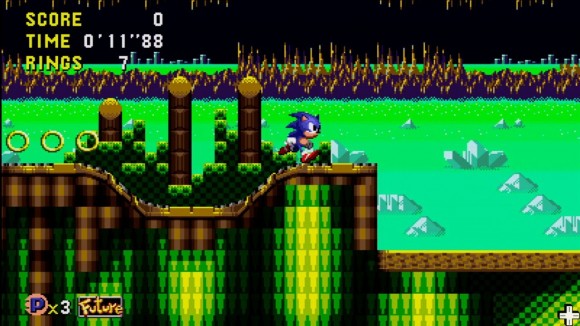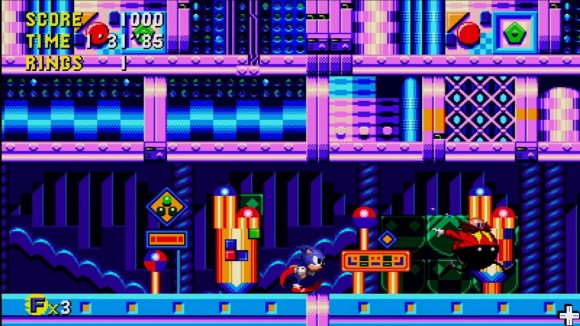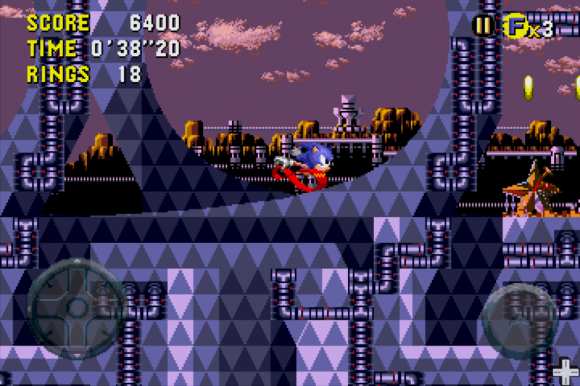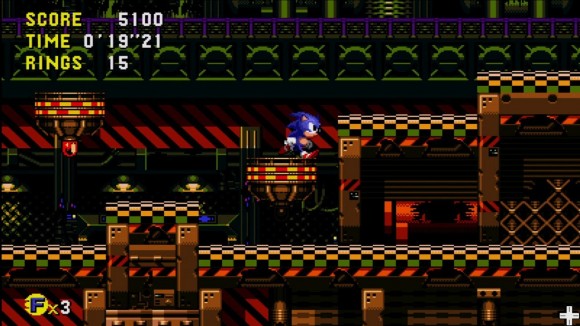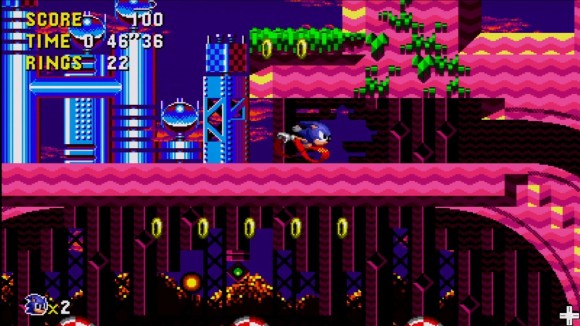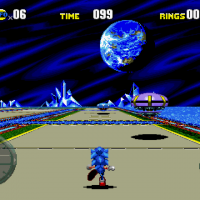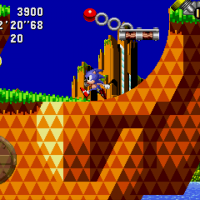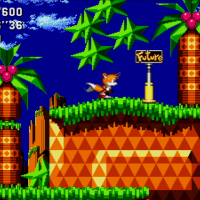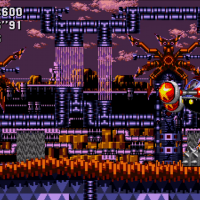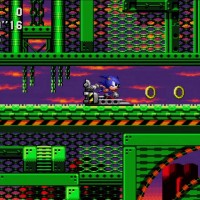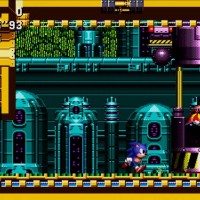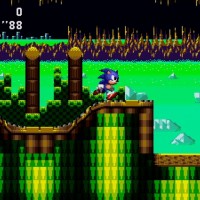Sonic CD

Playing games on CDs isn’t something that’s often accredited with the early 90s, many people only remember big, plastic cartridges that were either black or some off shade of gray. Yes, the SEGA Mega Drive and Super Nintendo Entertainment System are the two main consoles that people remember; yet, these aren’t the only systems to exist. Much like the Stellaview that was only released in Japan for the SNES, SEGA created the Mega CD. This piece of kit was an addon that could be plugged into the Mega Drive and predictably allowed the console to play CD games.
This system was made available worldwide; however, it was a huge flop with fewer than 10% of its original shipment to Europe being sold in the first six months. Yet, SEGA persisted and created what is often lauded as the best and forgotten Sonic title: Sonic the Hedgehog CD. What’s become standard in most early Sonic games has been dispelled in Sonic CD.
For many this will be the first occasion Sonic CD is played and it’s vital to understand that if you’re a seasoned Sonic gamer, this title will not only be a little frustrating, but it will also appear painfully short. This is where Sonic CD takes a notable departure from the classic Sonic formula of the day, whereas in Sonic 1, it’s very easy to simply hold the right d-Pad and jump every now and again for 90% of the title, Sonic CD requires a little less lateral thinking and far more skill.
Whilst the ability to simply hit right and jump does still exist, this will not only lead you to an untimely death, it will also create a dissatisfying ending, as the levels are a little short if you’re not actively seeking out additional elements. The underlying excuse for Sonic CD to juxtapose against its counterparts is due to the time travel that takes place in-level. Whilst there’s still a severe lack of plot, Sonic is able to play in two different points of time: the “Future” or the “Past”.
Each of these eras of time have very different level design and the “Future” levels tend to be more challenging than the Past as Sonic is able to alter the course of history. This is done by destroying certain elements of the game in the Past era, before Dr. Robotnik can start bothering the world. However, getting into the past is not as easy as striking a sword into a pedestal. Littered throughout the levels are signs that need to be ran through. Once Sonic has ran past the signs, should he manage to get to top speed for a few seconds he’ll be teleported back in time.
As easy as this sounds, it’s far more challenging than it has been on any Sonic game in the history of the franchise and that includes Sonic Spinball, Sonic 3D and even the Black Knight. In the Future, there’s not a lot of areas where maximum velocity can be reached and even where there are, Sonic’s normally just trying to get to top speed before he lands on a spring that sends him flying into spikes or a bottomless pit. In the Past, there are so many triggers to push you into the Future you’re likely to accidently hit one and end up in the Future in a furore of explicit words. The level design in Sonic CD is not only beautiful, fragmented and erratic, but unforgiving and ruthless.
Fragmented and erratic are usually phrases that are keyed to drugged up celebrities, ageing relatives and the odd eccentric woman with too many cats. However, in Sonic CD, this is perfect as the level design has been done in a way that makes even an experienced player think twice about what they’re doing.
The port from the Mega CD to the Xbox Live, PlayStation Network and mobile devices has not only been done well, but with love. This is mostly due to Christian Whitehead. This Australian coder had previously presented a jailbroken, fan-hacked version of Sonic CD, for free, across the internet a few years ago. It only took a few weeks for SEGA to realise that the fan-scene was producing better results than their in house teams. This is a problem that appears across the industry and is not just limited to legacy companies. Rather than sue Whitehead into the grave, they’ve employed him.
Whereby Sonic CD has some collision issues, these have been refined and for the most part removed in this edition of Sonic CD. Not only that, but where most re-releases aren’t given a real HD treatment, Sonic CD has been treated with care and has been designed to display correctly on our new fangled, widescreen, HD sets. There are no stretched pixels in this game. Alongside these changes, there are also options to play the game with the Japanese or European soundtrack, play with a legendary orange character and earn achievements.
Graphically, the game is inspired by Sonic 1, with Sonic looking at his most classic and the controls are closest to that game. With the spin dash from Sonic 2 stolen and implemented in the Sonic CD way. The levels are lengthy and very bright; it feels like a cross between Casino Zone, Star Light Zone and Oil Ocean Zone. Whilst this isn’t a bad thing, it’s an epileptic’s nightmare and does make the game feel more retro than it needs to be.
Sonic CD is not only a departure from Sonic 1, but is an anomaly in the entire franchise as it takes a very different approach to a Sonic game. It’s a title that’s carefully crafted and yet erratic, something that’s painfully short for the casual player, but to those who play games is a twofor. Sonic CD is a thing of beauty, but is not just an iceberg; it’s got the substance to keep the gamer gaming.


